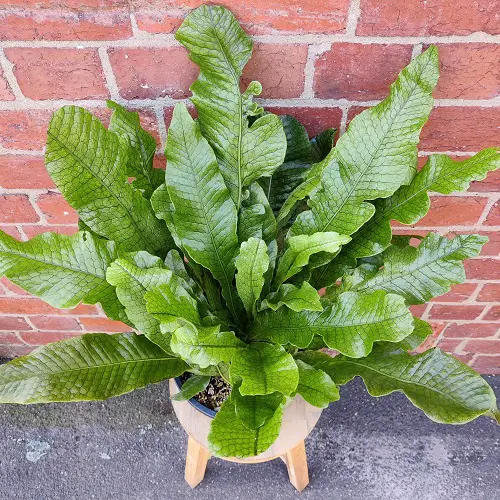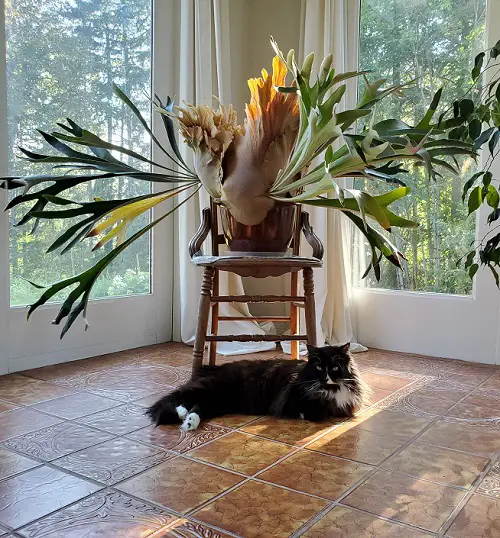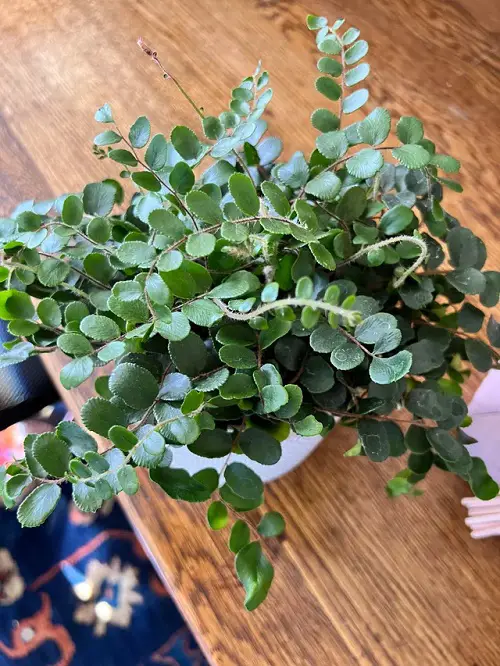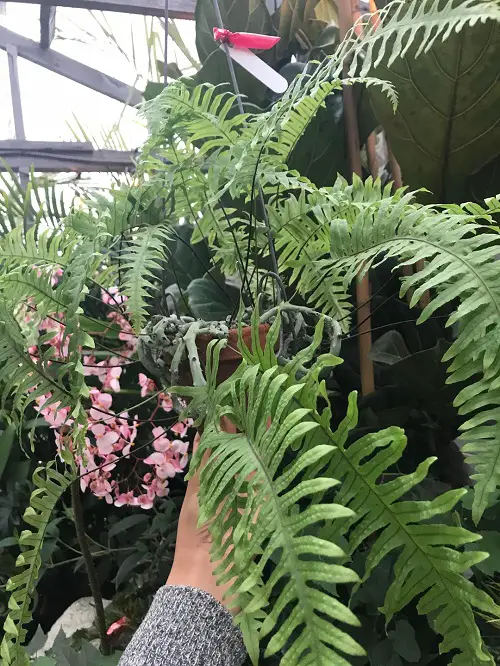These unique ferns look like something else at first glance, and that is what makes them a special addition to any plant collection.
Some ferns are more than just green and leafy; they have textures and shapes that make them masters of disguise. Each of these plants brings wild creativity to your garden. If you still don’t believe it, check them out below.
Unique Ferns That Look Like Something Else
1. Crocodile Fern

Botanical Name: Microsorum musifolium
The Crocodile Fern’s broad, leathery fronds are covered in raised, scaly veins that mimic crocodile skin so closely, you will do a double-take. Its deep green sheen and crinkled texture give it an almost animal-like appearance, which bears no resemblance to a fern.
This Southeast Asian fern thrives in humid surroundings, where it can utilize its rainforest roots. It also has air-purifying abilities, so you can house it indoors to have some fresh air around.
2. Staghorn Fern

Botanical Name: Platycerium bifurcatum
If a fern could impersonate antlers, this would be it. The Staghorn Fern grows wild, with forked fronds that resemble the branching horns of a deer, which makes it one of the most surreal plants you can hang on a wall. You can easily see them growing naturally on your island vacations in Southeast Asia
The fronds fan out dramatically, and mature plants can look like something from a fantasy movie. Mount it on a wooden plaque using sphagnum moss and keep it misted regularly.
Tip: Staghorn Fern absorbs moisture and nutrients through its fronds, not just its roots, so misting is important.
3. Blue Star Fern

Botanical Name: Phlebodium aureum
Blue Star Fern features silvery-blue, finger-like fronds that grow in unpredictable directions. This creates a tousled, wild look that gives a seaweed-like foliage vibe rather than a typical fern look.
Set this fern in low-light rooms where its waxy texture and unique hue make it a standout. This fern is also a natural air purifier and more drought-tolerant than many of its cousins. For busy gardeners who cannot go for regular watering, this is a perfect plant.
Tip: Let it dry out just slightly between watering spells, as it doesn’t like wet feet.
4. Bird’s Nest Fern

Botanical Name: Asplenium nidus
Looking more like a tropical bromeliad than a fern, the Bird’s Nest Fern will surprise you with its glossy and paddle-shaped leaves. No feathery fronds here, just strong, undivided blades that ripple at the edges.
This fern’s simplicity and bold structure give it a modern, almost architectural vibe that suits your minimalist spaces. Bird’s Nest Fern loves high humidity, so mist it regularly or use a humidifier to replicate its natural habitat.
Tip: Don’t water it directly into the center, or you will risk rot. Instead, water around the soil and
5. Button Fern

Botanical Name: Pellaea rotundifolia
Most people think ferns have to be frilly, but the Button Fern is unlike ferns with neat rows of round, leathery leaflets. These look more like strings of coins or jewelry than traditional fern fronds.
Unlike many ferns, this New Zealand native is tough and thrives in lower humidity and brighter indoor light. Due to its compact growth habit, it is ideal for your office desk and shelves.
Tip: Use a terra cotta pot to help wick away excess moisture, which this fern dislikes.
6. Rabbit’s Foot Fern

Botanical Name: Davallia fejeensis
This quirky fern gets its name from the fuzzy, creeping rhizomes that spill over the edge of pots, and looks exactly like a rabbit’s foot. These soft, tan “feet” grow visibly above the soil, which gives your plant a playful, animal-like charm.
These feathery fronds contrast beautifully with the furry rhizomes, while adding a unique texture to the shelves or hanging planters in your home. If you want to keep this fern in good health, give it bright, indirect light and keep the soil consistently moist.
Tip: Let the fuzzy rhizomes hang freely because they’re not just for show; they help absorb moisture and nutrients from the air.
7. Caterpillar Fern

Botanical Name: Polypodium formosanum
If you have ever seen a plant that looks like a line of crawling caterpillars, this is it. The Caterpillar Fern features segmented, plump fronds that mimic the look of a caterpillar’s body.
This fern thrives in dappled light and likes humidity, which makes it a great fit for terrariums or bathrooms. The whimsical shape of its foliage turns heads and works especially well in quirky or playful decor themes, while justifying the name “Caterpillar”.
Tip: Avoid direct sun to keep its segmented fronds from browning. It loves staying cool and evenly moist.


